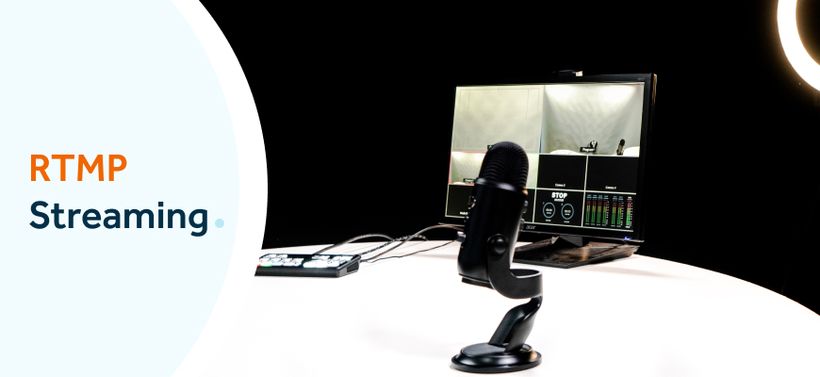RTMP webinar vs. normal webinar
Pam
20 September 2021 - 3 min
If you decide to host a webinar, you can make it as custom as you want. With the WebinarGeek software, you're ready to go live right away. Want to add more of your own branding? Or stream in higher quality? Then consider an RTMP webinar.
What is RTMP?
RTMP stands for Real-Time Messaging Protocol. Quite a mouthful, so we'll abbreviate it for convenience. RTMP is a way in which mediums transmit data. When streaming with the standard browser, you are bound by a bitrate. The bitrate indicates how much data is transferred per second.
With the standard browser, you are bound to a standard bitrate. If you are hosting an RTMP webinar, your stream will not be via the standard browser but via RTMP. With RTMP more bits (i.e. data) per second can be transmitted. If more data can pass through a stream, the quality will be better. Think of it as a river: the wider the river, the faster and more water can pass through it. For RTMP webinars, the same applies. The more data the stream passes, the faster you receive information. The quality is also better if the data is transmitted quickly.
Why host an RTMP webinar?
With an RTMP webinar, you have more control over what's in the stream - it often works well with certain hardware and software. The most commonly used external software is OBS. With OBS, you actually have an "empty" video frame. You decide what you show in it! You can do anything you want with it and completely customize your webinar environment. You can read all about how to use OBS for your RTMP webinar in our article about multi-camera webinars or check the video 'How to Stream with OBS' on YouTube.
What do you need to stream an RTMP webinar?
To stream RTMP with WebinarGeek you first need a Premium subscription with the RTMP add-on. If you have an Advanced subscription then it is included in your package.
After you add RTMP to your subscription, you're basically ready to go! Optionally you add external hardware. You can choose to stream via an external encoder, like the ATEM mini for example. Thanks to an external encoder you can switch between shots during your RTMP webinar. If you use multiple cameras, this is definitely recommended.
How to get everything ready for broadcasting your RTMP webinar is explained in detail when you click on the link.
Related articles
Why Webinar Analytics Matter and How They Improve Your Results
Discover why webinar analytics are essential for better engagement, stronger follow-up, and smarter decisions. Learn which metrics matter and how to use them to improve every webinar.
How to Use Localization to Reach More People With Less Work
Discover how localization in WebinarGeek lets you host one webinar in multiple languages. Increase reach, improve accessibility, and create a consistent brand experience for international audiences.
Local experience for a global audience
Webinars work best when your audience feels right at home. With WebinarGeek’s localization feature, you can present your webinars, emails, and registration pages in the language your viewers understand.
/f/110864/617x610/445d6c9238/pam_2.png)

/f/110864/870x400/0112689b96/rtmp.jpg)

/f/110864/1200x630/03bf441907/why-webinar-analytics-matter-and-how-they-improve-your-results.jpg)

/f/110864/1201x631/f714691cde/how-to-use-localization-to-reach-more-people-with-less-work.jpg)

/f/110864/1920x1005/41bece797c/translation.png)
